Direct binding of arsenic trioxide to AMPK and generation of inhibitory effects on acute myeloid leukemia precursors
- PMID: 25344585
- PMCID: PMC4297272
- DOI: 10.1158/1535-7163.MCT-14-0665-T
Direct binding of arsenic trioxide to AMPK and generation of inhibitory effects on acute myeloid leukemia precursors
Abstract
Arsenic trioxide (As2O3) exhibits potent antineoplastic effects and is used extensively in clinical oncology for the treatment of a subset of patients with acute myeloid leukemia (AML). Although As2O3 is known to regulate activation of several signaling cascades, the key events, accounting for its antileukemic properties, remain to be defined. We provide evidence that arsenic can directly bind to cysteine 299 in AMPKα and inhibit its activity. This inhibition of AMPK by arsenic is required in part for its cytotoxic effects on primitive leukemic progenitors from patients with AML, while concomitant treatment with an AMPK activator antagonizes in vivo the arsenic-induced antileukemic effects in a xenograft AML mouse model. A consequence of AMPK inhibition is activation of the mTOR pathway as a negative regulatory feedback loop. However, when AMPK expression is lost, arsenic-dependent activation of the kinase RSK downstream of MAPK activity compensates the generation of regulatory feedback signals through phosphorylation of downstream mTOR targets. Thus, therapeutic regimens with As2O3 will need to include inhibitors of both the mTOR and RSK pathways in combination to prevent engagement of negative feedback loops and maximize antineoplastic responses.
©2014 American Association for Cancer Research.
Figures
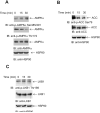
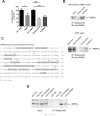
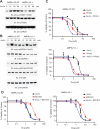
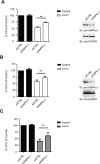
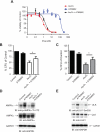

Similar articles
-
Regulatory effects of mammalian target of rapamycin-mediated signals in the generation of arsenic trioxide responses.J Biol Chem. 2008 Jan 25;283(4):1992-2001. doi: 10.1074/jbc.M705227200. Epub 2007 Nov 29. J Biol Chem. 2008. PMID: 18048359
-
Regulation of the kinase RSK1 by arsenic trioxide and generation of antileukemic responses.Cancer Biol Ther. 2013 May;14(5):411-6. doi: 10.4161/cbt.23760. Epub 2013 Feb 1. Cancer Biol Ther. 2013. PMID: 23377826 Free PMC article.
-
Activation of mammalian target of rapamycin and the p70 S6 kinase by arsenic trioxide in BCR-ABL-expressing cells.Mol Cancer Ther. 2006 Nov;5(11):2815-23. doi: 10.1158/1535-7163.MCT-06-0263. Mol Cancer Ther. 2006. PMID: 17121928
-
The Role of AMPK/mTOR Modulators in the Therapy of Acute Myeloid Leukemia.Curr Med Chem. 2019;26(12):2208-2229. doi: 10.2174/0929867325666180117105522. Curr Med Chem. 2019. PMID: 29345570 Review.
-
The effects of arsenic trioxide (As2O3) on human megakaryocytic leukemia cell lines. With a comparison of its effects on other cell lineages.Leuk Lymphoma. 2000 Jun;38(1-2):153-63. doi: 10.3109/10428190009060329. Leuk Lymphoma. 2000. PMID: 10811458 Review.
Cited by
-
Arsenic and Tau Phosphorylation: a Mechanistic Review.Biol Trace Elem Res. 2023 Dec;201(12):5708-5720. doi: 10.1007/s12011-023-03634-y. Epub 2023 May 22. Biol Trace Elem Res. 2023. PMID: 37211576 Review.
-
RSK Isoforms in Acute Myeloid Leukemia.Biomedicines. 2021 Jun 24;9(7):726. doi: 10.3390/biomedicines9070726. Biomedicines. 2021. PMID: 34202904 Free PMC article. Review.
-
Pre-clinical evidence of PIM kinase inhibitor activity in BCR-ABL1 unmutated and mutated Philadelphia chromosome-positive (Ph+) leukemias.Oncotarget. 2015 Oct 20;6(32):33206-16. doi: 10.18632/oncotarget.5091. Oncotarget. 2015. PMID: 26375673 Free PMC article.
-
Combination of ATO with FLT3 TKIs eliminates FLT3/ITD+ leukemia cells through reduced expression of FLT3.Oncotarget. 2018 Aug 31;9(68):32885-32899. doi: 10.18632/oncotarget.25972. eCollection 2018 Aug 31. Oncotarget. 2018. PMID: 30250637 Free PMC article.
-
The role of autophagy in metal-induced urogenital carcinogenesis.Semin Cancer Biol. 2021 Nov;76:247-257. doi: 10.1016/j.semcancer.2021.03.022. Epub 2021 Mar 30. Semin Cancer Biol. 2021. PMID: 33798723 Free PMC article. Review.
References
-
- Waxman S, Anderson KC. History of the development of arsenic derivatives in cancer therapy. Oncologist. 2001;6(Suppl 2):3–10. - PubMed
-
- Cohen MH, Hirschfeld S, Flamm Honig S, Ibrahim A, Johnson JR, O'Leary JJ, et al. Drug approval summaries: arsenic trioxide, tamoxifen citrate, anastrazole, paclitaxel, bexarotene. Oncologist. 2001;6:4–11. - PubMed
-
- Dilda PJ, Hogg PJ. Arsenical-based cancer drugs. Cancer Treat Rev. 2007;33:542–64. - PubMed
Publication types
MeSH terms
Substances
Grants and funding
- R01 CA121192/CA/NCI NIH HHS/United States
- F32CA183536/CA/NCI NIH HHS/United States
- R01 CA077816/CA/NCI NIH HHS/United States
- I01 CX000916/CX/CSRD VA/United States
- F32 CA183536/CA/NCI NIH HHS/United States
- R01 CA155566/CA/NCI NIH HHS/United States
- CA77816/CA/NCI NIH HHS/United States
- P30 CA060553/CA/NCI NIH HHS/United States
- U01 CA151461/CA/NCI NIH HHS/United States
- T32CA070085/CA/NCI NIH HHS/United States
- T32 CA070085/CA/NCI NIH HHS/United States
- CA155566/CA/NCI NIH HHS/United States
- CA121192/CA/NCI NIH HHS/United States
LinkOut - more resources
Full Text Sources
Other Literature Sources
Medical
Miscellaneous

